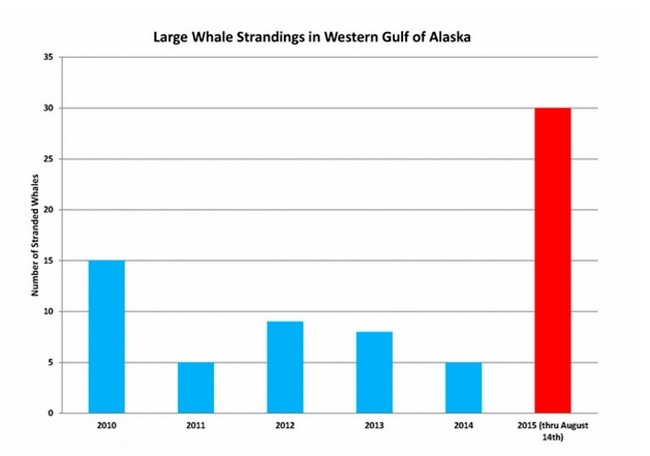30 whales dead for unknown reason at the Alaska Coast
Whales are dying off the coast of Alaska and no one knows why.
“Bio toxins will be a top priority, but not the only priority that we’ll be looking at to rule in or rule out whether it’s playing a role in this investigation and these mortalities”.
A mysterious die-off of large whales in the Gulf of Alaska is now classified as an “unusual mortality event”, elevating the official response, the National Oceanic and Atmospheric Administration said Thursday. The agency said the deaths are about three times the historical average for the region. That includes 11 fin whales, 14 humpback whales, one gray whale, and four unidentified cetaceans.
Because the coasts of Canada and Alaska can be hard to access, researchers are calling for help from citizen scientists.
Tuesday’s declaration by NOAA Fisheries will trigger an enhanced and “focused, expert investigation” into the whale deaths, an agency statement media advisory said.
Unusual mortality events involve an increase in the number or tempo of marine mammal deaths or deaths involving vulnerable species or other conditions suggesting something unusual is causing the deaths.
This map from NOAA shows where the whale strandings have been.
Researchers still aren’t sure what caused the 1999 to 2001 event, when more than 700 whales died, but they do believe it was environmentally driven.
Fewer than 15 large whale strandings have been reported in the area each year since 2010, according to NOAA. Members of the public can greatly assist the investigation by immediately reporting any sightings of dead whales or distressed live animals they discover.
Toxic algae bloom is one of the possibilities being considered strongly.
Such investigations can require months or years of data collection and analysis, according to NOAA.
NOAA asks that any individual who detects a dead whale or a living upset whale call the Alaska Marine Mammal Stranding Hotline at 877-925-7773, or contact the U.S. Coast Guard on VHF Channel 16.








